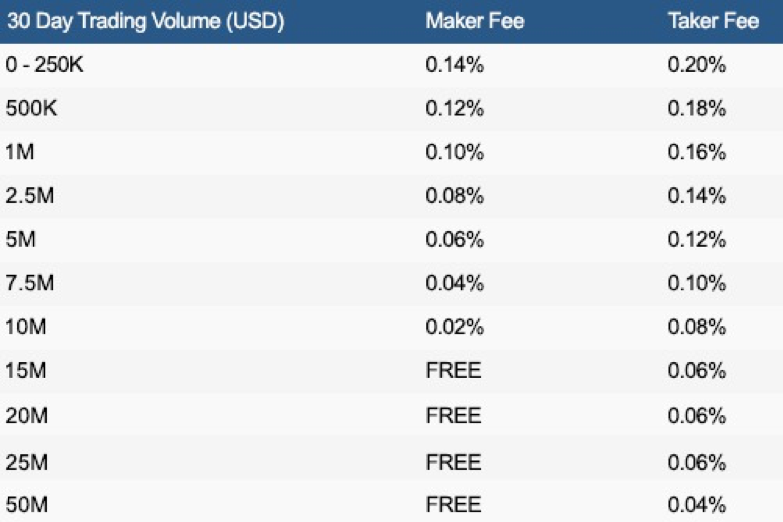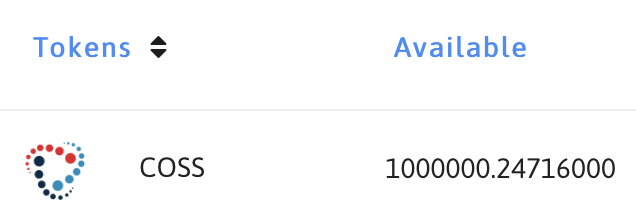
Will it Moon 🚀?
Part 4 → A Series on the Future of Cryptocurrency
Part 4 → A Series on the Future of Cryptocurrency
How to generate profit from a cryptocurrency exchange
The only question you need to ask: WILL IT HAPPEN?

I have taken a look at the Singapore based cryptocurrency exchange www.coss.io. So far, my conclusion is that it might just be one of the most undervalued tokens/exchanges in the entire industry. Here’s how I connect the dots together.
Some of the reasons COSS is at an all-time low:
- Very poor Dev team.
- Very slow response time for fixing issues related to Dev.
- Little to none marketing.
- Underfunded due to a very small ICO (raised on 3M USD)
- A poor performing platform with multiple serious issues.
What have changed:
- COSS has now teamed up with one of the most solid Dev teams in the industry. Proven by the fact that they have already built an operate crypto exchange with 50M per day volume with a super smooth and fast architecture. The combined new team with all the recent new hiring’s in-house at COSS HQ in Singapore has now the full focus on building COSS 2.0 (estimated to launch early Q1 2019).
- Complete re-design and new build from scratch with the aim to become one of the fastest and most stabile exchanges on the market.
- Massive marketing plan scheduled for the 2.0 launch.
- The new venture also makes COSS financially strong enough to build through these hurdles and deliver a state-of-the art product.
All of the above are simple facts and doesn’t necessarily set COSS apart from many other exchanges out there. However, the token model of COSS in itself does.
With a new solid platform, I see no reason why COSS exchange shouldn’t go to 50M/day trading volume. Although today’s activity is very low, they still have a huge following. Many COSS token holders are monitoring the evolution of COSS but they prefer to trade elsewhere due to the current state of the platform. These traders will be fairly easy to bring back once positive news start to hit the market.
Let’s look at some historical numbers. The cheapest buy-in during COSS ICO was around 3.5 cents. Today, it is trading just above 5 cents. In itself, a decent investment for the early birds. At the December 2017 peak (entire market), COSS token reached 3.20 USD with a daily trading volume of only 12M USD. But let’s totally forget about the trading price of the COSS token for a while. The ONLY interesting thing is the trading volume combined with the FSA (fee split allocation)…
COSS has just announced implementation of a new trading fee structure:

Let’s do some assumptions.
☞ COSS focuses a lot on new ICO tokens and the following within communities. With its current 150,000 registered traders and this constant flow of new traders, we assume an average trading fee per trader at 0.075% (making the fee calculation at 0.15% based on traded volume).
☞ COSS FSA (fee split allocation) where holders of the COSS token on a weekly basis (announced to be daily in COSS 2.0) get 50% of the trading fees accumulated on the exchange. The fees are paid out in the various tokens/coins they are collected in (regardless of value on the COSS token itself). So, per day will be total amount of trading fees divided by 2 (50%) divided by the amount of circulating COSS tokens (approx. 120M) multiplied against the amount of COSS tokens you hold.
Now to some mouth-watering assumptions with calculations.
☞ 2019: COSS average 50M USD per day in trading volume. Total trading volume for the year 18,250,000,000 USD.
☞ With an average trading fee of 0.15%, the total collected trading fee will be: 27,375,000 USD of which 50% represent 13,687,500 USD
☞ Now we divide this by the circulating supply of 120M and we get:
0.1140 USD per COSS token. This is an annual return of approx. 200% based on today’s trading value of 0.0549 USD.
☞ What would an average investor see as a good annual ROI? Should we go greedy and say 20% or basic and say 5–10%? Regardless, even at 20%, it shows that the COSS token currently is undervalued by 10x.
With these calculations we have not counted for:
The COSS token appreciation if they meet the volume (could easily be 15–30 times today’s price). The other tokens the FSA is paid out in (today’s market is still very low).
Thus, I will be looking at increasing my portfolio to a minimum of 1M COSS (today’s cost approx. 55,000 USD)

With an estimated 2019 return of 0.1140 USD per token, that will give me 114,000 USD annually without never having to think about the COSS tokens trading price and without selling a single COSS token EVER.
Another bonus which is nothing less than pure gravy is the fact that the “daily” FSA also pays out COSS tokens based on all trading fees collected in COSS, so my portfolio will grow daily and only increase my annual return as we move forward.
Also note that the other 50% of the fees is COSS turnover which is 13,687,000 USD allowing them to have a monthly budget of over 2M for operations and marketing. This does not include added revenue from token listings, advisory fees, hosting of ICOs and whatever COSS choses to bring to the table.
So back to the original question. WILL IT HAPPEN? Of course, only time will tell, and you should never invest more than you can afford to lose. But I see big changes in how COSS is operating as a company and I have turned from being a bystander to becoming a strong supporter. But hey, that’s just me 😉

